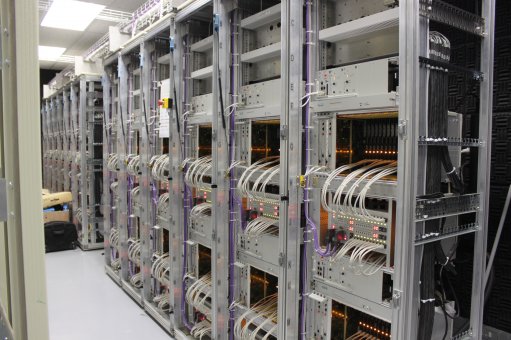
INTERLOCKING TESTING FACILITY Enables Siemens to test and configure the software that will be used on PRASA's signalling systems
International engineering company Siemens is on track to complete its project scope for the Passenger Rail Agency of South Africa’s (PRASA’s) rail signalling system project in early 2020.
Phases 1 and 2 of the Gauteng resignalling project are now 83% and 33% complete respectively, Siemens Gauteng signalling project manager Lucio Lefebvre tells Engineering News.
Siemens was awarded the R1.2-billion contract for Phase 1 of the Gauteng signalling programme and was later awarded a further R2.4-billion contract for Phase 2. These programmes form part of PRASA’s plans to implement a new technologically advanced rail signalling system on its commuter rail network to replace the old and obsolete systems.
The system will control railway traffic and allow an increase in the number of passengers that can be safely transported daily by rail in Gauteng, while the solutions for upgrading the signalling infrastructure will also reduce delays by providing operators with greater availability and flexibility, according to Siemens.
The project entails the modernisation of the rail signalling, communications and train management systems in high-volume corridors such as Naledi, in Soweto, to Johannesburg; Pretoria to Johannesburg; and Mabopane to Pretoria; as well as Mamelodi to Pretoria.
Siemens’ contract also involves the installation of new signalling light units, the changing of point machines and the introduction of new train detection axle counters, as well as the installation of electronic interlocking systems at 92 stations that will be connected to eight satellite routing hubs, which, in turn, will be connected to the centrally controlled operations centre, known as the Gauteng Nerve Centre (GNC), located in Kaalfontein, Gauteng.
Construction of the GNC was completed in 2015 and will control all commuter traffic in Gauteng once the signalling contract has been completed.
To date, Siemens has completed and commissioned 11 stations in the Midway and Kaalfontein regions. About 81 of the stations still need to be completed, with Siemens planning to deliver two stations a month on average.
The advantages of the electronic equipment include the improved availability of the system, operators being able to make use of bidirectional signalling and reduced headways between the trains,” explains Lefebvre.
Further, the electronic interlocking systems provide greater functionality, are more compact, more reliable, use less power and can be dovetailed with other systems by taking advantage of modern communication like Ethernet, Profibus, or fibre networks, he adds.
The company has, to date, also completed about 13 of the 42 sites where track work repairs and replacements were undertaken.
The construction of the Siemens interlocking testing facility (ITF) in Northriding, Randburg, Johannesburg, is also nearing completion, with software testing at the facility expected to start in early 2017.
The ITF enables Siemens to test and configure the software that will be used in the electronic interlocking/signalling systems, while the actual original equipment is delivered and being installed on site, explains Siemens engineer Rainer Deitmar. The software is tested by Siemens and validated by PRASA.
Deitmar stresses that this facility is a “significant investment for South Africa” and believes it to be unique in the southern hemisphere.
Lefebvre adds that the ITF has the advantage of conducting all the tests and data engineering locally, whereas other suppliers or companies would rely more on overseas test facilities or test equipment.
“The software has to be tested before we can implement it at each station to be 100% sure that what is being implemented will perform in a suitable manner. This test facility will assist Siemens in doing so,” Lefebvre says.
The core software has been adapted to conform to South African railway requirements and is configured for each of the 92 stations across Gauteng. Once configured, the software is then tested on the ITF before being uploaded onto the physical systems at the stations for the final tests.
The ITF can be set up to test large stations, like Johannesburg station, or three smaller stations which can be tested simultaneously on the ITF. The facility can also incorporate stress testing and system boundary testing, as well as regression tests.
“[By] applying the ITF, Siemens can also reduce the bottlenecks and delays in the implementation of hardware and software solutions used in the project,” Deitmar concludes.